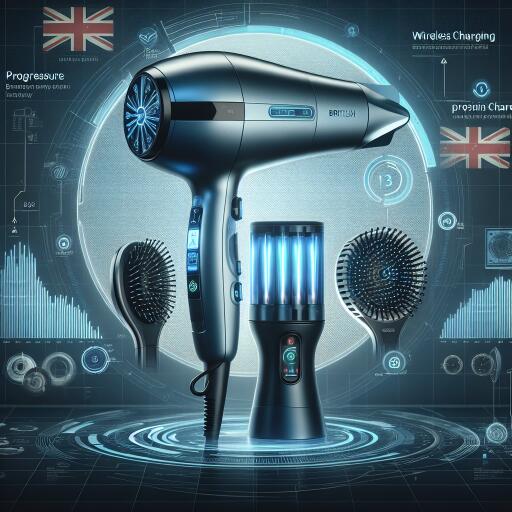How British Innovation is Heating Up the Blow-Dry Market
There’s a hot trend blazing through the economy – and no, it’s not just the summer sun. The rise of ‘hair tech,’ particularly devices that straighten or curl hair, sees the UK proudly taking the lead on the global stage, promising substantial export growth.
The typical morning routine involving hair dryers or curling irons may seem mundane, yet beneath their glossy exteriors are sophisticated designs powered by specialized engineers who have mastered heating air to precise temperatures packed with AI technology.
This thriving market is on vivid display at the newly refurbished beauty section of John Lewis’s flagship store in Oxford Street, London. Here, giants like GHD (short for Good Hair Day), Dyson, and SharkNinja have set up their own dedicated spaces.
Women looking to recreate that effortlessly tousled “beachy wave” or the voluminous blow-dry made iconic by the 1980s TV series get the chance to compare products, each sporting advanced heating systems controlled by microchips and sleek designs.
To master GHD’s Platinum straightener – a top-tier offering in GHD’s lineup – could transport you to the glamorous sidelines alongside Netflix’s Dallas Cowboys Cheerleaders. The adage “the higher the hair, the closer to the stars” rings true, a view surely endorsed by GHD’s head, Jeroen Temmerman.
“Demonstration and education,” as stated by Temmerman, are essential in familiarizing consumers with using these innovative tools, which significantly contributed to the company’s staggering $380 million (£300 million) worldwide sales in 2023.
While the price range of these high-demand hair tools, from £90 to around £500, may cause pause, the investment is justified. Dyson’s Airstrait, for instance, is priced at £450, whereas the brand-new GHD Duet Blow-dry Dryer comes in at £389.
Temmerman underscores the point: “It’s about design, not about justifying the spend.” This speaks to the essence of what makes the global hair tech sector, estimated at an annual value of $10 billion, a crucial component of the broader $100 billion market that encompasses hair care, appliances, and nail products. Notably, the growth trajectory of the hair tech industry is rapid and steady, with the UK leading the way.
The underbelly of hair straighteners or curlers is far more complex than meets the eye. It takes anywhere from five to seven years for a new product to fully develop, shares Temmerman. GHD’s research facility located near Cambridge, a hub for about 100 engineers, is a testament to this dedication, holding an impressive 117 patents.
At the heart of their innovation lies the principle of ‘thermal manipulation’ – that is, the art of styling hair through heat. This involves rigorous lab testing to ensure the elimination of mishaps, such as snagging, which can compromise user experience.
GHD’s robust ethos of precision is further evidenced by dropping devices 35,000 times in trials to simulate regular use resilience. Founded in 2001, GHD benefits from the cutting-edge R&D of its parent company, the American haircare giant Wella, backed by private equity major KKR.
American counterpart, SharkNinja, known initially for their vacuum prowess, ventured into hair tech with its Shark Beauty lineup in 2021. Dyson joined the arena in 2016, diversifying into hair technology with a whopping £500 million investment two years ago, and plans to introduce 20 innovative hair products by 2026, based on extensive hair research spanning from the cortex down to the cuticle.
Despite recent workforce reductions in the UK, Dyson continues to employ thousands of engineers across its facilities. Meanwhile, SharkNinja maintains a thriving R&D hub at its Battersea Power Station headquarters in Southwest London.
Interestingly, the U.S., long hailed as a tech trailblazer, lags in innovative hair products. According to Temmerman, American women are more likely to visit salons than their British counterparts, who embrace DIY styling. Additionally, concerns about excessive heat damage may deter them from using high-temperature hair tools.
Temmerman is eager for his hair straighteners and tongs, designed to operate at modest temperatures, to capture the American market share. The rapid ascent of hair tech stems from the perception of these gadgets as “essential” rather than extravagant.
The pandemic cemented this notion. With the surge in video calls via Teams or Zoom, personal grooming, particularly hair styling, found its place in the spotlight once again.
As the blow-dry market continues to thrive, it’s clear that British innovation remains at its forefront, delivering not just style but technological substance. With powerful players continuously reshaping the landscape, the future of hair tech promises further excitement and evolution.









